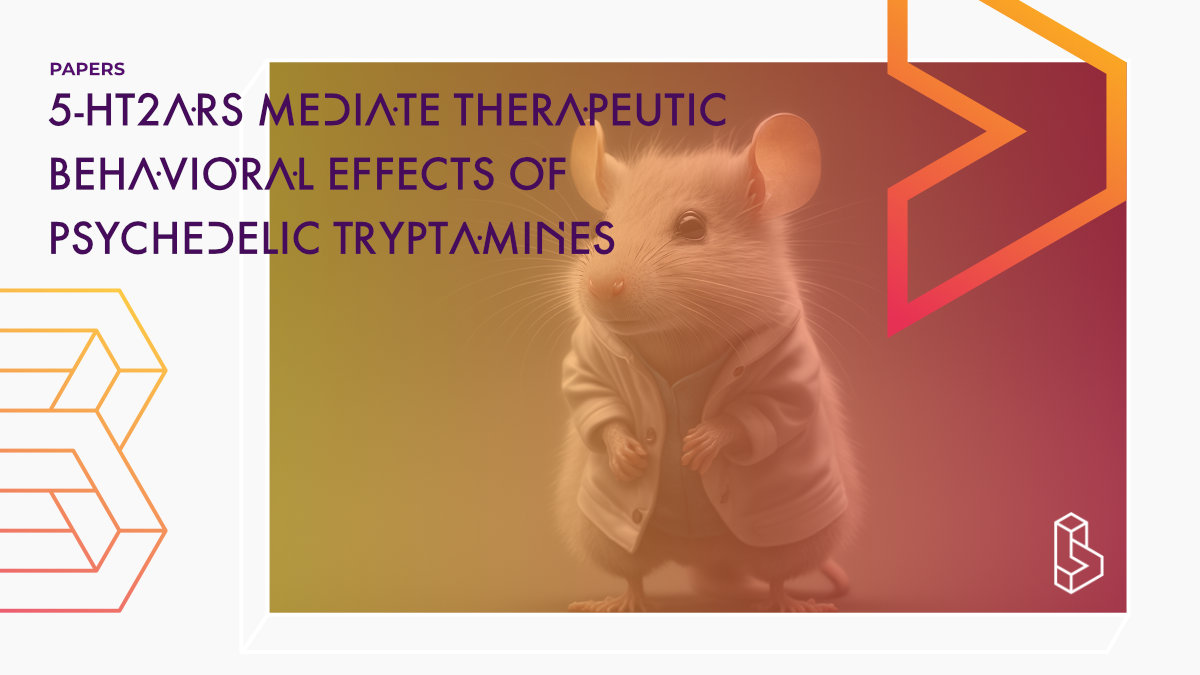This animal study suggests that activating serotonin 2A receptors is essential for tryptamine-based psychedelics to produce antidepressant-like effects in rodents. The study also suggests that psychedelic tryptamines can induce hallucinogenic and therapeutic effects through activation of the same receptor. It highlights the need for full mechanistic understanding of how these molecules produce therapeutic effects.
Abstract
“Psychedelic compounds have displayed antidepressant potential in both humans and rodents. Despite their promise, psychedelics can induce undesired effects that pose safety concerns and limit their clinical scalability. The rational development of optimized psychedelic-related medicines will require a full mechanistic understanding of how these molecules produce therapeutic effects. While the hallucinogenic properties of psychedelics are generally attributed to activation of serotonin 2A receptors (5-HT2ARs), it is currently unclear if these receptors also mediate their antidepressant effects as several nonhallucinogenic analogues of psychedelics with antidepressant-like properties have been developed. Moreover, many psychedelics exhibit promiscuous pharmacology, making it challenging to identify their primary therapeutic target(s). Here, we use a combination of pharmacological and genetic tools to demonstrate that activation of 5-HT2A receptors is essential for tryptamine-based psychedelics to produce antidepressant-like effects in rodents. Our results suggest that psychedelic tryptamines can induce hallucinogenic and therapeutic effects through activation of the same receptor.”
Authors: Lindsay P. Cameron, Seona D. Patel, Maxemiliano V. Vargas, Eden V. Barragan, Hannah N. Saeger, Hunter T. Warren, Winston L. Chow, John A. Gray & David E. Olson
Summary of 5-HT2ARs Mediate Therapeutic Behavioral Effects of Psychedelic Tryptamines
Psychoplastogens such as psilocybin, LSD, and 5-MeO are increasingly recognized for their potential to treat depression, anxiety disorders, and addiction. They induce neurogenesis in the medial prefrontal cortex and have been shown to promote long-lasting antidepressant-like behavioural effects in rodents.
Recent evidence suggests that psychedelics produce longer-lasting changes in neuronal structure and behaviour than ketamine, emphasizing the need to better understand their mechanisms of action.
Several pieces of evidence suggest that 5-HT2ARs are important for the therapeutic effects of psychedelics, but conflicting reports have prevented researchers from drawing any firm conclusions. Here, the researchers use a combination of pharmacological and genetic tools to demonstrate that 5-HT2ARs are essential for the sustained therapeutic behavioural effects of psychedelics.
Find this paper
5-HT2ARs Mediate Therapeutic Behavioral Effects of Psychedelic Tryptamines
https://doi.org/10.1021/acschemneuro.2c00718
Paywall | Google Scholar | Backup | 🕊
Study details
Participants
0
Rodents

